Clematis brachiata
| Botanical Name | Clematis brachiata |
|||||||||||
| Family | Ranunculaceae - The buttercup family. |
|||||||||||
| Pronunciation | klem-AT-iss brack-ee-AY-tuh |
|||||||||||
| Common Name(s) |
English: Traveler's Joy; Old Man's beard
Afrikaans: Klimop; Lemoenbloeisels
IsiXhosa: Ityolo
IsiZulu: Umdlonzo
Sesotho: Morara
Setswana: Mogau
|
|||||||||||
| Plant Group |
|
|||||||||||
| Plant Size |
|
|||||||||||
| Position |
|
|||||||||||
| General Information |
|
|||||||||||
| Specific Information | Clematis brachiata is a twining climber or scrambler with woody stems that can reach up to 5 m. After flowering, large, fluffy, seed heads develop that remain on the plant until the latter part of winter. |
|||||||||||
| Ad Break | ||||||||||||
| Flowers | ||||||||||||
| Description | four pointed petals with numerous yellow stamens |
|||||||||||
| Season |
|
|||||||||||
| Colour |
|
|||||||||||
| Growth Rate | ||||||||||||
| Plant Uses | ||||||||||||
| Distribution and Habitat | in all provinces of South Africa as well as in Swaziland, Lesotho, Namibia, and Botswana, in any climate from winter rainfall to summer rainfall regions |
|||||||||||
| Planting Suggestions | Clematis brachiata will grow in most soils but respond best if the soil is well drained. Add compost or a general fertiliser if the soil is very poor or the site is poorly drained, and mulch well. Clematis will need a frame on which to climb, although, allowed to scramble and climb amongst the trees and shrubs or over tree stumps, it makes a trouble free and eye-catching sight. The untidy end-of-season growth should be pruned well back in late winter. It likes water during summer and prefers dryness during winter, |
|||||||||||
| Medicinal Uses | The common name, Traveler's Joy, must surely stem from the use if this plant by travelers in earlier days. Leaves were packed into the shoes to relieve blisters and aches, under the horse saddles to prevent saddle sores and into the crown of a hat to keep the wearer cool and protected from the sun. A refreshing tea is made from the leaves (¼ cup fresh leaves in 1 cup of boiling water, stand for 5 minutes, strain and drink, sweetened, if desired, with honey). This tea is traditionally used to relieve headaches, coughs and colds, chest ailments, abdominal upsets and as a soothing wash for aching feet, cracked skin and blisters, as well as an eyewash for tired eyes. The inhaled scent of crushed tendrils and stems is said to clear a blocked nose, ease sinus headaches and encourage sneezing. The inhaled steam of a bowl of roots, stems and leaves in boiling water is used for relieving colds, malaria, sinus infections and asthma and a strong brew of leaves, stems and flowers in the bath relieves aching muscles. |
|||||||||||
| Ad Break | ||||||||||||


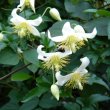
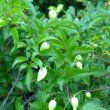
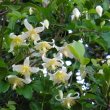
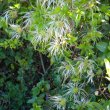
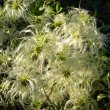
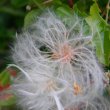
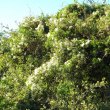
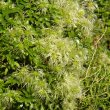


Discuss this plant
Share knowledge, ask a question or give an experience.